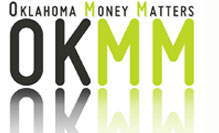Identity Theft Prevention
ID theft happens when someone uses your personal information (name, Social Security number (SSN), credit card number, etc.) without your permission to commit fraud. It can take a lot of time and effort to repair the damage, so it’s important to take special precautions to protect your personal information.
::Online::
Guard your information. Don’t provide personal information via email or the internet unless you initiate the inquiry. Banks and credit card companies don’t ask customers to verify account information by email.
Create strong passwords. Create hard-to-break passwords for all your accounts. Choose passwords with a mix of characters and numbers that would be hard to guess and avoid using your birth date, name or phone number.
Check your credit report. Visit AnnualCreditReport.com at least once a year to get your free report from each of the three major consumer reporting agencies.
::In-Person::
Keep documents safe. Store personal papers - like your birth certificate, Social Security card, loan information and insurance policies - in a fire-proof lock box, gun safe or other secure location.
Shred unnecessary documents. Destroy all unnecessary documents that contain personal information using a cross cut paper shredder.
Protect your SSN. If you’re asked to give your SSN in a public setting, try to avoid providing it verbally. Instead, write it down on a piece of paper and shred it later. Or better yet, type it on a calculator then erase it when finished. It’s not a good idea to carry your Social Security card in your purse or wallet.
Stop junk mail. Opt out of receiving pre-approved credit and insurance offers by calling 888.567.8688 or visiting OptOutPrescreen.com, a service run by the consumer reporting agencies.
Go paperless. Switch to online bill payment methods. This helps eliminate your paper trail and provides 24-hour access to monitor your account activity and respond faster to fraudulent charges.
::Already a Victim?::
If you’re a victim of identity theft, act fast.
- Check your credit reports for fraudulent activity.
- Place a fraud alert on your credit reports so new accounts can’t be opened in your name.
- Close the accounts that have been tampered with or opened without your authorization.
- File a complaint with the Federal Trade Commission.
- File a police report.
For detailed information about each step, visit IdentityTheft.gov.



